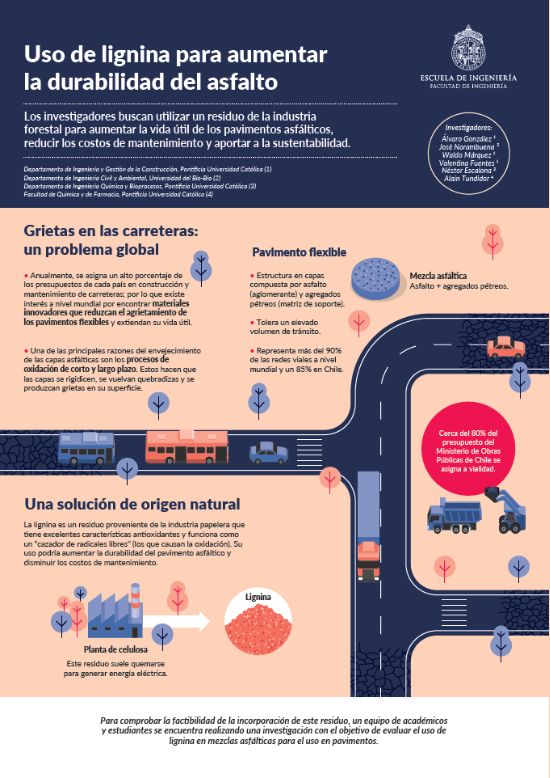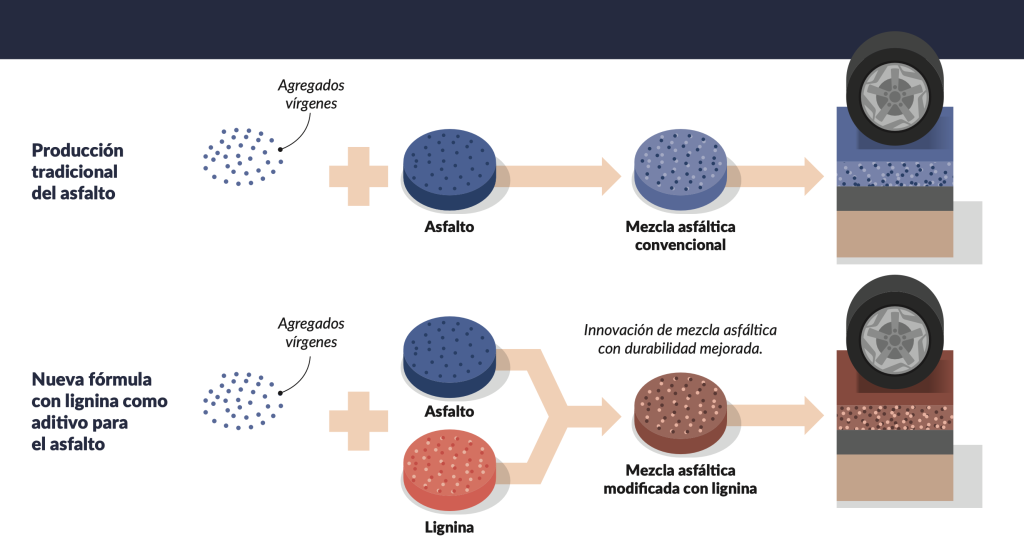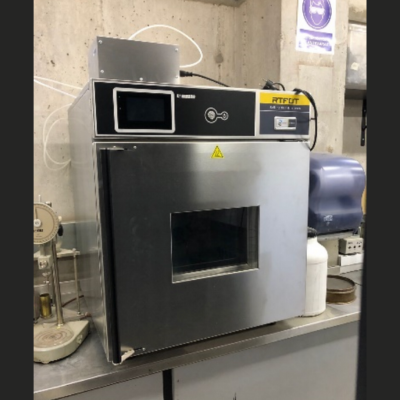Department of Construction Engineering and Management

Portada » Improving Asphalt Roads with Lignin: The Sustainable Use of Forest Waste

Department of Construction Engineering and Management
In Chile, approximately 80% of the Ministry of Public Works’ budget is allocated to roads, streets, and general infrastructure. Maintaining a road network involves not only constructing new roads but also performing regular maintenance, which demands significant resources and labor.
Over 85% of the country’s roads are constructed using flexible pavement, commonly known as asphalt pavement, which is capable of handling high traffic volumes. However, over time, it begins to crack due to the effects of traffic loads and weather conditions. Flexible pavement is built in layers, some of which are composed of asphalt mix, made up of asphalt cement and granular material. Asphalt cement, a petroleum byproduct, acts as a binder or ‘glue’ for the granular material, providing the necessary hardness, flexibility, and resistance for optimal road performance. One of the major challenges with asphalt is that, in its current form, it undergoes a gradual oxidation process, which causes it to harden and eventually crack, leading to fissures in the road surface.
How can we extend the lifespan of asphalt, minimizing the need for maintenance and repairs?
A research team led by Professor Álvaro González is currently exploring a material that could make a substantial impact in this regard: lignin. This byproduct of the paper industry possesses antioxidant properties and has the ability to capture free radicals responsible for the oxidation of asphalt.
Although lignin is typically burned for energy production, researchers are now conducting laboratory experiments to develop an asphalt pavement formula that incorporates it. This innovation could reduce oxidation and cracking, ultimately extending the lifespan of the pavement.

Given its antioxidant capabilities, researchers are examining the potential of integrating lignin into the traditional asphalt mix.
Department of Construction Engineering and Management

The research initially focused on understanding the properties and behavior of both lignin and asphalt, followed by experiments to create asphalt-lignin mixtures and determine the optimal proportions of each material. In the process, key variables such as temperature and mixing speed were carefully considered.
Each asphalt-lignin sample was placed in a Rolling Thin Film Oven (RTFO), which simulates the oxidation process, and then subjected to performance tests to evaluate its deformation and fatigue resistance. The asphalt-lignin mixture was then used to prepare asphalt blends, which were tested to assess their physical and mechanical properties.
The results so far have been promising: incorporating lignin into the asphalt mix has enhanced the durability of flexible pavements, with potential benefits extending even further. This byproduct could replace up to 20% of the asphalt currently used in flexible pavement mixtures, significantly reducing the consumption of this non-renewable, petroleum-derived material. If this new mixture is implemented, lignin could transition from an industrial waste to a low-cost resource for the construction industry, fostering a circular economy.

An RTFO (Rolling Thin Film Oven) is a laboratory device that efficiently simulates the oxidation of asphalt in a short period of time.

Department of Construction Engineering and Management